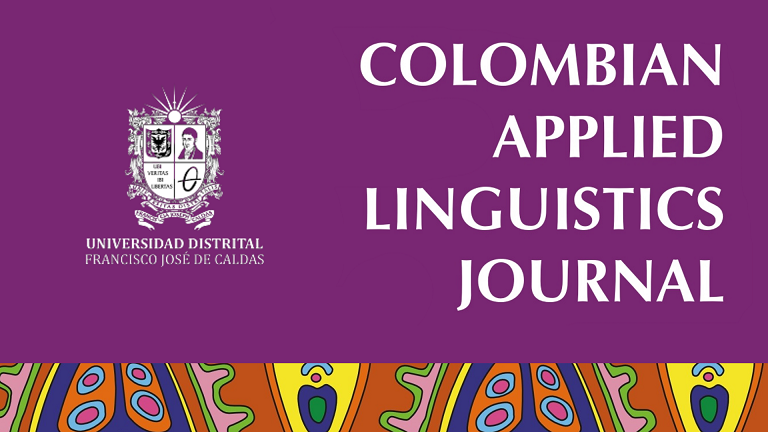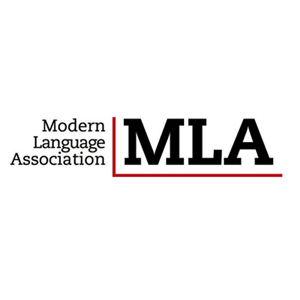Análisis de género aplicado a dos patrones textuales para un curso de inglés con fines específicos IFE
Genre Analysis Applied to Two Textual Patterns for an English for Specific Purposes Course ESP
Análise de gênero aplicada aos dois padrões textuais para uma aula de inglês com fins específicos IFE
Este artículo analiza dos extractos tomados de dos capítulos de dos libros de texto en los cuales se identificaron dos patrones textuales: (1) problema-solución-evaluación y (2) delito-defensa. El estudio, realizado con los principios del análisis de género aplicado (Hoey, 2001) y la caracterización del discurso jurídico propuesta por Lisina (2013), permitió acuñar el segundo caso, delito-defensa, como un nuevo patrón. Así, este puede ser considerado un aporte tanto para la literatura relacionada con los patrones textuales como para el campo de la enseñanza del Inglés con Fines Específicos, ife. Además, el artículo presenta una serie de actividades basada en el enfoque de aprendizaje por tarea (Willis, 1996), organizadores gráficos, vocabulario técnico y el análisis llevado a cabo. Esta tarea ha sido diseñada para un curso de ife de lectura de textos académicos en inglés nivel ii en la Universidad del Valle en Cali, Colombia.
esp/eap, genre, Offence-Defence, Problem-Solution-Evaluation, Task-Based Learning Approach, legal Hallmarks (en)
IFE|IFA, gênero, ofensa-defensa, problema-solução- avaliação, escopo de aprendizagem baseada em tarefas, caraterísticas do discurso legal (pt)
Aslrasuli, M., & Bakhshian, M. (2014). The effect of teaching English textual patterns (problem-solution, hypothetical real, general-specific) on Iranian EFL learners’ reading ability. Procedia – Social and Behavioral Sciences, 98(6), 297–303. [Proceedings of the International Conference on Current Trends in ELT]. Retrieved from http://www.sciencedirect.com/ science/article/pii/S1877042814025117
Bhatia, V. (2002). Applied genre analysis: A multi-perspective model. Ibérica Revista de la Asociación Europea de Lenguas para Fines Específicos, 3–19. Retrieved from http://www.aelfe.org/documents/ text4-Bhatia.pdf
Bolton, A. (1999). Quality management systems for the food industry. New York, USA: Springer us.
Cook, G. (1989). Discourse. Oxford: University Press.
Coulthard, M., Moon, R., Johnson, A., Caldas-Coulthard, C. R., & Holland, R. (2000). Written discourse. Birmingham: The Centre for English Language Studies at University of Birmingham.
Esfandiari, M., Knight, P., Molinari, J., & Zacharias, S. (2012). Task-based learning applied. A collection of research papers. The Nottingham Jubilee Press. School of Education. University of Nottingham. Retrieved: https://www.nottingham.ac.uk/education/documents/research/jubileepress/occasionalpapers/task-based-learning-applied-web-vers---1-dec-2012-(lp).pdf
Fogler H. S. & Le Blanc S. E. (1995). Strategies for Creative Problem Solving. New Jersey, USA: Prentice Hall.
Grabe, B. (2002). Using Discourse Patterns to Improve Reading Comprehension. JALT. Conference Proceedings. Retrieved from http://jaltpublications.org/archive/proceedings/2002/009.pdf
Hoey, M. (2001). Textual interaction: An introduction to written discourse analysis. New York: Routledge.
Lisina, N. (2013). Stylistic features of legal discourse: A comparative study of English and Norwegian legal vocabulary [thesis]. University of Oslo, Oslo, Norway.
Ludescher, F. (2003). Task-based learning by Dave and Jane Willis. Retrieved from http://www2.vobs.at/ludescher/Grammar/task_based_learning.htm
Orcutt, K. (n.d). 20 strategies to teach text structure. Retrieved from https://education.illinoisstate.edu/downloads/casei/3-01-04handout%20TextStructureResources%201.pdf
The Society of Food Hygiene and Technology. (2009). Retrieve from: http://www.sofht.co.uk/wp-content/uploads/2016/09/W-food-law-due-diligencedefence.pdf
Widdowson, H. G. (1978). Teaching language as communication. Oxford: Oxford University Press.
Willis, J. (1996). A framework for task-based learning. USA: Longman.
APA
ACM
ACS
ABNT
Chicago
Harvard
IEEE
MLA
Turabian
Vancouver
Descargar cita
Citaciones

Métricas PlumX
Visitas
Descargas
Recibido: 19 de abril de 2016; Aceptado: 21 de diciembre de 2016
Abstract
This article analyses two excerpts taken from two chapters of two textbooks in which two textual patterns were identified:(1) Problem-Solution-Evaluation and (2) Offence-Defence. The analysis, based on the principles of the applied-genre analysis (Hoey, 2001) and the characterization of legal discourse proposed by Lisina (2013), made it possible to coin the Offence-Defence pattern as a new one. Thus, this new pattern may be considered a contribution to both the textual pattern literature and the ESP field. In addition, the article presents a series of activities based on the Task-Based Learning Approach (Willis, 1996), graphic organizers, technical vocabulary, and the analysis carried out. This task has been designed for a second level ESP course on reading academic texts at Universidad del Valle in Cali, Colombia.
Keywords:
ESP/EAP, genre, Offence-Defence, Problem-Solution-Evaluation, Task-Based Learning Approach, legal Hallmarks.Resumen
Este artículo analiza dos extractos tomados de dos capítulos de dos libros de texto en los cuales se identificaron dos patrones textuales: (1) problema-solución-evaluación y (2) delito-defensa. El estudio, realizado con los principios del análisis de género aplicado (Hoey, 2001) y la caracterización del discurso jurídico propuesta por Lisina (2013), permitió acuñar el segundo caso, delito-defensa, como un nuevo patrón. Así, este puede ser considerado un aporte tanto para la literatura relacionada con los patrones textuales como para el campo de la enseñanza del Inglés con Fines Específicos, IFE. Además, el artículo presenta una serie de actividades basada en el enfoque de aprendizaje por tarea (Willis, 1996), organizadores gráficos, vocabulario técnico y el análisis llevado a cabo. Esta tarea ha sido diseñada para un curso de IFE de lectura de textos académicos en inglés nivel II en la Universidad del Valle en Cali, Colombia.
Palabras clave:
IFE/IFA, género, ofensa-defensa, problema-solución-evaluación, enfoque de aprendizaje basado en tareas, características del discurso legal.Resumo
Este artigo analisa dois fragmentos selecionados de dois capítulos de dois livros de texto nos quais foram identificados dois padrões textuais:1) problema-solução- avaliação e 2) delito-defensa. O estudo, realizado sob os princípios da análise de género aplicada (Hoey, 2001)e a caracterização do discurso jurídico exposta por Lisina (2013), permitiu adjudicar o segundo caso, delito-defensa, como um novo padrão. Assim, esta pode ser considerada uma contribuição tanto para a literatura relacionado com os padrões textuais quanto para o campo do ensino do IFE. Além disso, o artigo apresenta uma série de atividades baseadas no escopo de aprendizagem por tarefas (Wills, 1996), organizadores gráficos, vocabulário técnico e a análise realizada. Essa tarefa foi projetada para uma aula de IFE de leitura de textos académicos em inglés nível II na Universidade del Valle em Cali, Colômbia.
Palavras chave:
IFE|IFA, género, ofensa-defensa, problema-solução- avaliação, escopo de aprendizagem baseada em tarefas, caraterísticas do discurso legal..Introduction
When reading and writing, not only vocabulary and grammar but also text structure, systems, networks and patterns, are important tools to process a text because they help to navigate the readers. Coulthard, Moon, Johnson, Cal-das-Coulthard, & Holland, 2000
Over the last few years, discourse and text analysis, and their application to both writing and reading have become an important activity, particularly in ESP and EAP. Ideally, these analyses should include the implementation of text-processing tools, such as discourse markers, text structure and lexico-grammar analysis, as Coulthard proposes in the quote above and how other proponents refer to them. This set of interlocking tools aids readers to understand and analyse texts―in this particular case, in a foreign language.
Many text analysts refer to patterns like problem-solution evaluation, claim and counter-claim, and general-specific as the most frequently used in academic setting. Hoey (2001), for instance, has mainly characterized problem-solution patterns, and he argues that this is the most common pattern of all (or at least the most commonly described). This author, however, recognizes the limitations of problem-solution patterning and the need to look for other types of patterns. These culturally popular patterns of text organization, as Hoey called them, are: the Goal-Achievement pattern, the Opportunity-Taking pattern, the Desire Arousal-Fulfilment pattern, and the Gap in Knowledge-filling pattern.
There are two aspects that are worth it in Hoey's description. First, his reiterative position in relation to Problem-Solution pattern as "one of the most frequently occurring (if not the most frequent)" (Hoey, 2001 p. 142). And second, his comparison among the problem-solution pattern and the other patterns showing them as interlocking ones. He summarizes this analysis as follows:
We may choose to talk of the spre pattern, and see S as a situation in all the patterns, including Object of the Desire in the Desire Arousal pattern, P as Problem, Goal, Gap in Knowledge, Opportunity or Desire Arousal and R as a Response, Means of Achievement, Filling of Gap, Taking of Opportunity or Attempt to fulfil the Desired. E would be the Evaluation in all patterns. (Hoey, 2001, p. 166).
From the point of view of the implications for language learning, particularly in reading, it must be recognized that Hoey emphasizes the importance of the reader's schemas or scripts since, if they do not share those of the writer, the readers will not find it easy to read the text.
In spite of these contributions made by Hoey from the discourse and textual analysis perspective, to our knowledge, neither this author nor other analysts refer to a common pattern we have found in some texts we use regularly in our ESP courses at Universidad del Valle. We have called this pattern the Offence-Defence pattern.
In addition, for the purposes of this paper, the distinct features of this pattern have been used to look at school honour policies, company regulations, public statutes (Appendix I), a list of websites under Codes, Policies, Statutes and Regulations―and thus establish the syntax, vocabulary and discourse markers used within various Offence-Defence text types, opening the possibility to determine structural features of wording. The results were a marked visual structuring of the offence and defence sections regarding the direction of discourse. One aims to inform about the law itself, to inform about the different types of variants within the offence, and the correspondent sentence to be applied. The second one is constructed in such a way as to find a form to avoid punishment or reduce it substantially; it usually shows exceptions to the rule or grounds to accept the offence as a matter of diligence where the blame slides down to a second party or attributed to the circumstances.
So, taking into account some aspects of Hoey's descriptions and applying the concepts from Bhatia (2002), Lisina (2013), and the task-based approach by Willis (1996), this paper has a two-fold purpose: (1)to analyse one text having a Problem-Solution pattern and another text characterized by an Offence-Defence pattern; and (2) to suggest a set of reading activities for the latter text, based on the analysis proposed in this article and on the task-based approach.
Following H. G. Widdowson (1978), we think it is important to recognize that language teaching is a theoretical as well as a practical activity; thus, effective teaching material and classroom procedures depend on principles deriving from an understanding of what language is and how it is used.
Consequently, according to Michael Hoey's Summary of the Characteristics of Problem-Solution Patterns, we will formulate characteristics which define an Offence-defence pattern, also taking into account Natalia Lisina's Stylistic Features of Legal Discourse: A Comparative Study of English and Norwegian Legal Vocabulary (2013) as a reference of legal vocabulary in order to determine discourse markers and thus define the textual pattern.
Theoretical Referents
Discourse analysis & applied genre analysis
Bhatia (2002) proposes a multi-perspective model to offer a systematic view of genre theory and its application. In his model, he refers to four interacting perspectives on discourse, namely (1) the real world perspective, (2) the writer's socio-cognitive perspective, (3) the discourse analyst's perspective, and (4) the pedagogical perspective. For the purposes of this article, and taking into account its origin in an ESP classroom, we will refer briefly to the last two perspectives. The particular method we have adopted is the textual analysis. According to Bathia, linguistic descriptions of texts, especially the analysis of lexico-grammatical systems in register analysis, text-linguistics and much of discourse analysis based on systematic-functional framework has been extremely influential in the studies of textualization of a range of professional and institutional genres, including those used at school level. In relation to the fourth perspective, pedagogical, Hoey (2001) states that pedagogical practices and procedures are commonly used to prepare the students to meet the demands of the disciplinary communication. Moreover, the analytical findings of these practices and procedures are applied in materials and tasks design and consequently can be integrated in language learning procedures, as shown in the third section of this article.
Problem-Solution pattern
Michael Hoey (2001) summarizes the main characteristics of the problem-solution pattern. This characterization was applied to analyse the offence-defence pattern in order to demonstrate that it could be considered as a new pattern and a contribution to the textual pattern literature, as well as the ESP teaching field, resulting in instructional activities.
This author states the following characteristics:
-
The Problem-Solution pattern arises as a result of the writer answering a predictable series of questions. The order in which these questions are answered is, however, not fixed.
-
The pattern is characteristically lexically signalled, either by means of inscribed signal (e.g. solution), or inscribed evaluations functioning as signals (e.g. unfortunately), or by means of evoking signals (e.g. had no money). One or more of these signals serves as a trigger for the pattern, in that it makes the pattern visible to the reader.
-
The pattern may be preceded by a situation, which is recognized retrospectively as providing a context for the pattern.
-
In between the problem and the response there may be an intervening stage in which either a plan or recommendation or outline of what will count as a response occurs.
-
A negative result or a negative evaluation of the response usually prompts a recycling of the pattern, and the pattern continues to recycle until such time as a positive result or evaluation is reached. A positive result or evaluation can always be overridden by an immediately following negative result or evaluation. The exception is when a negative result is felt to be so severe as not to admit any further response.
-
The elements of the pattern are attributed to the participants in the text, including the writer and the reader.
-
Participant attribution permits the recognition of the interweaving of several different and co-existing patterns.
Having in mind Hoey's analysis, it is time to take a closer look into the features of legal discourse proposed by Natalia Lisina. Both models have served as complementing theoretical foundations to characterize the Offence-Defence pattern.
Legal discourse features
According to Natalia Lisina, everyday language is not enough for writing academic papers, conducting business or understanding legal contracts, and nor is it useful for understanding the type of language used by lawyers, judges and peopled involved in law. In her own words: "Different life situations demand different language contexts and different vocabulary" (Lisina, 2013, p. 7). In the world of law, legalese, officialese and the language of the law have become both the access key and detainer for understanding clearly what codes, regulations, statutes and established laws mean.
Given that such a reality implies a language breach between law professionals and lay people, Melinkoff coined the term hallmarks of legal language (Melinkoff, 1963, as cited in Lisina, 2013) looking to reduce such breach. These hallmarks make reference to words bearing a specific legal connotation, thus resulting in comprehensible insight into what was impossible to understand for a person who is unacquainted with legal language. An example of the mentioned hallmarks is the word said, which normally "denotes the act of speaking", whereas in the legal context the word said acquires the adjectival sense of "named or mentioned before" (Lisina, 2013, p. 76) ―for more examples, see Appendix II, List 1: "Free" elements of legal texts.
Furthermore, Lisina portrays distinct features of legal texts unveiled by scholars on the subject:
long and complex sentences, technical voca-bulary/"vocabulary peculiar to the legal register" (Trosberg, 1997), archaic words, unusual sentence structure, nominalizations and passives, multiple negation and impersonal constructions and redundancy also referred to as a "boilerplate" (Tiersma, 1999). Further, legal language is said to be "formulaic" and to be composed of "technical terms, common terms with uncommon meaning, archaic expressions, doublets, formal items, unusual prepositional phrases, high frequency of any" (Trosberg, 1997). (Lisina, 2013, p. 39).
The latter contributions are the ones that will be taken into account for two main purposes: first, delineating the Offence-Defence pattern and, second, for their implementation in an instructional task-based activity.
Teaching text structure
Identifying patterns of organization is NOT the ultimate goal of text structure teaching. Kristy Orcutt
Undoubtedly, an accurate understanding of text structure can help students improve their reading comprehension process. But there are other elements/ factors that are necessary to develop both reading and writing abilities. These elements/factors are presented by Grabe (2002) when, based on research results, he describes three major lines of research that can be identified regarding the effect of text structure instruction. The first, as Grabe states, is related to "the impact of direct instruction, which explicitly raises student awareness of specific text structuring" (Ambruster et al., 1987; Carrell, 1985; Duke & Pearson, 2002; Miller & George, 1992, as cited in Grabe, 2002, p. 11). In this case, the emphasis is on "the use of transition words, topic sentence, sentence initial phrases, anaphoric linkages and definite reference to prior text ideas, and the role of various grammatical structures to build coherence in texts" (Grabe, 2002, p. 11).
In a second stage, Grabe proposes a line regarding the development of "student awareness of text structure using graphic organizers, semantic maps, outline grids, tree diagrams, and hierarchical summaries" (Grabe, 2002, p. 11). To this matter Grabe concludes,
that students comprehend texts better when they are shown visually how text information is organized (along with the linguistic clues that signal this organization). [...] When these visual representations (graphic organizers) are used on a regular basis, students consistently demonstrate significant improvement in their reading comprehension with academic expository texts.
Finally, as a third venue, Grabe addresses the instruction in reading strategies. As exposed in his work
strategy training which includes summarizing, semantic mapping, predicting, forming questions from headings and sub-headings, and using adjunct questions all appear to improve awareness of text structure and text comprehension (2002, p. 11).
This instruction is important because, through strategies, students focus their attention for different comprehension stages that support the understanding of text structure, as the identification of the main idea and text study skills. However, it is important to bear in mind Cook's (1989) recommendation that "splitting communication into levels may sometimes help, but those separate levels need to be reintegrated" (p. 83).
In summary, in the three lines of research described above there are three interrelated levels to teaching text structure that readers need to internalize first as knowledge about text. In subsequent steps, they must use this knowledge on a regular basis to improve their comprehension.
Following these ideas, for our purpose, we added a fourth line that is directly related to the outcome and production of students based on the comprehension and analysis of the text structure. This fourth line is reflected on this proposal in our task in the Post-reading section. (See section "Applications: instructional task-based activity").
Task-Based Learning Approach
Before diving into what Task-Based Learning is, it is important to define what a task is. Willis (1996) defines task as "a goal-oriented activity with a clear purpose" (as cited in Ludescher, 2003, s. p.). This means that it is important to provide a clear direction for the students to follow and thus achieve a specific result. Such definition implies scope delimitation when it comes to designing a task. In other words, the task is limited by the expected results.
Furthermore, Willis speaks about a communication task and how it "involves achieving an outcome, creating a final product that can be appreciated by other[s]" (Ludescher, 2003, s. p.). Such products can be "compiling a list of reasons, features, or things that need doing under particular circumstances; comparing two pictures and/or texts to find the differences; and solving a problem or designing a brochure" (Ludescher, 2003, s. p.).
Therefore, Task-Based Learning (TBL), according to Willis (1996), is based on a learner-centered approach in the sense that it offers a preparation for the task, an activity focused on the language, and a production or reflection. That is, students may engage in the construction of the task; the usage of the language is context-based in order to evoke a specific communicative intention; and a possibility to enter into a metacognitive state wherein the process itself is evaluated in order to understand what can be improved, what works, what needs to be recreated, etc. in regards to the task and also to the learning process, all in order to improve the learning experience. Therefore, the learner will focus on accuracy as well as on fluency because the design of the task allows the combination of the communicative approach and the language form.
Essentially, TBL gives learners the opportunity to reflect on their own production in order to self-test their language skills. Also, it allows the use of English in context addressing authentic texts. As explained by Knight (2012 as cited in Esfariandi, p. 2) TBL is one "of the dominant teaching methodologies in the area of second language teaching." In this compilation, they show some examples where TBL has been used in practice, specifically in a process-genre approach to teaching writing in EAP and alternative approaches for teaching students the task of writing using academic sources on pre-sessional English for Academic Purposes (EAP) courses.
Nevertheless, for the purposes of this paper, the Task-Based Learning Framework provided by Ludescher based on Willis is implemented in the design of the resulting task of the present study. The framework is shown in Table 1:
Source: Ludescher, 2003, s. p.
Table 1: Task-Based Learning Framework (tblf)
Thanks to the multi-activity structured task, students will be able to engage tasks from individual standpoints according to background knowledge, as well as to recognize the need of a specific language use in order to fulfill tasks satisfactorily.
Since this approach suggests several activities with different objectives, it also allows the students to reflect on their work so as to improve their language performance. In this sense, students become self-aware of their language acquisition development and form criteria as to what they can improve and how they can improve.
For the purposes of this paper, based on the language features of legal language and the stages suggested by the TBL Framework, a set of activities composing task is designed.
Analysis of Two Textual Patterns: Problem-Solution-Evaluation and Offence-Defence
To analyse and exemplify both textual patterns, we used two texts taken from two books that have been used in the ESP classroom. The first text is Making Gasoline from Coal, one of the cases of the ill-defined problems taken from chapter1of the book Strategies for Creative Problem Solving (Fogler & LeBlanc, 1995) (Appendix III). The second text is the introduction of the book Quality Management
Systems for the Food Industry (Appendix III). These analyses are based on Hoey's Problem-Solution-Evaluation model and Lisina's characterization of legal discourse.
Problem-solution-evaluation analysis
A Problem-Solution-Evaluation pattern divides information into three main sections: one describing "the situation," which we think corresponds to the problem, another stating "the instructions given by the manager to his research group to solve the perceived problem," which obviously corresponds to the solution and, subsequently, "the real problem," which reflects the evaluation.
Following Hoey's characterization of the Problem-Solution-Evaluation pattern, we analysed the excerpt Making Gasoline from Coal and found the following characteristics within the text:
The pattern is preceded by a situation: A few years ago a major oil company was developing a process [...] to produce liquid petroleum products from coal [...]”and "The process was not operating properly [...].
-
The problem stems as a result of the writer describing a series of stages of the process, e.g. "[…] tar-like carbonaceous material were being deposited on the pipes [...] plugging the pipes. This process is illustrated with a flux diagram showing the stages of the process.
-
The pattern is characteristically lexically signalled:
-
Inscribed signals: "solve, real problem", "the problem was solved".
-
Inscribed evaluations: "determine", "more general problem statement", "the instructions given", "the perceived problem", "the real problem".
-
-
Plan or recommendation of a response results in a first instruction to solve the perceived problem: "Improve the quality of the solvents used to dissolve the coal and prevent these tar-like deposits".
-
Negative result: "After a year and a half [...], no one solvent proved to be a better solution [...].
-
According to Hoey (2001), this is a recycling of the pattern, and it continues to recycle until a positive result or evaluation is reached.
-
In this case, as there was a negative result, the pattern shows characteristics (d) and (e) twice to show the final positive result, as follows:
-
Recommendation of a change of instruction words: "Improve" was replaced by "Determine" so the research group also focused on the deposits and not the solvents alone.
-
Positive result: The problem was solved by increasing the velocity of the furnace pipe [...] less time to react [...] to form the tar-like deposits"
-
Participants in the text: the manager, the research group.
-
Co-existing patterns:
-
Description:" [...] In this process [...]"
-
Instruction: "the instructions given
-
As stated above, we will analyse the second pattern we have coined Offence-Defence.
Offence-Defence analysis
Offence-Defence characterization
The Offence-Defence pattern was coined as part of the contribution to the textual pattern corpora. In order to characterize the Offence-Defence pattern, the tool embedded on the Chrome website's search engine was used for previous analysis of laws, sections and statutes to confirm the existence of the Offence-Defence pattern through the legal hallmarks provided by Lisina―as shown in Appendix I. Table A: Analysis of the Offence-Defence pattern features within the Stalking and Harassment Legal Guidance―which correspond to the inscribed signals of text structure proposed by Hoey. As a result, we identified the Offence-Defence pattern.
This is demonstrated in the specific case we found in the introduction to the text "Quality Management Systems for the Food Industry" (Appendix III).
By using Hoey's and Lisina's analyses as guides, we propose the Offence-Defence pattern characteristics and then we will analyse the introductory chapter in light of such characteristics:
-
The pattern is preceded by an introductory paragraph contextualizing the food industry: i.e. "The manufacture of food [...]has become [...] a demanding occupation as consumer expectation and legislative requirements are ever more demanding."
-
The Offence-Defence pattern is a result of the writer defining a series of possible events according to the Food Safety Act 1990, as they are mandatory for those in the food industry (a law delimits a legal action from an illegal one). e.g. "Section 7, rendering food injurious to health", "Section 15, falsely describing or presenting food."
-
Definition is one of the patterns, which coexists recurrently with the Offence-Defence pattern. i.e. The Act defines several offences."
-
The pattern has characteristic lexical signals, either inscribed signals e.g. "offence"; or inscribed evaluations functioning as signals e.g. "in accordance with"; or evoking signals e.g. "prosecutors should ensure", "there is evidence." These signals function as triggers and make the pattern recognizable to the reader.
-
In between offence and defence there are some clarifying points so as to determine with precision what constitutes an offence and a resemblance to the offence. i.e. "The requirements of the Act are formidable, but […] it is impossible for manufacturers […] to guarantee that every item of food […] is perfect […] it is inevitable that sometimes a defective product will reach the marketplace."
-
Pattern elements are attributed to participants: e.g. "victim/prosecutor," "suspect/ defendant," and "the law/judge." Since the text is a site for interaction (Hoey, 2001), these participants also include writer and reader.
-
As established by the Food Safety Act 1990, the prosecution presents a charge and the defence contests with proofs. e.g. "[…] the person charged to prove that he took all reasonable precautions and exercised all due diligence to avoid the commission of the offence [...]"The prosecution presents proofs until demonstration of indictment or non-indictment occurs.
For a deeper analysis of this pattern, first it is important to note that one clue is the book title, Quality Management Systems in Food Industry: A Guide to ISO 9001/2. Secondly, in section1.1 Introduction, we can see characteristic a), where the author refers to the manufacture of food as an increasing demanding occupation as a result of two main factors: consumer expectations, and the demanding legislative requirements. The first factor (i.e. consumer expectations) is related to quality food and safety, and good prices. These expectations are reflected in a rigorous legislation which demands a thorough understanding and attentive management on the side of food industry administrators.
For these reasons, in section 1.2, The Food Safety Act 1990, the author defines some of the offences and, in section 1.3, The statutory defences-Due diligence, which reflects characteristics b) and c) of the pattern. Also, characteristics d) and e) are found in these two sections. Sections 1.2 and 1.3 structure the pattern we propose: the Offence-Defence pattern.
Characteristic f) appears throughout the chapter, for it constantly involves the pattern elements (offence-defence) attributed to the participants (suspect and victim, respectively). The constant interaction between writer and reader is given due to the interactive nature of the discourse.
Characteristic g) is represented in two ways: In the first, the text has some clues portraying charged people and the second is the previous knowledge of the reader.
Although the Offence-Defence pattern is closely related to the Problem-Solution-Evaluation or SPRE pattern, as shown below, it has its own signals and hallmarks, and functions within a legal discourse.
First, by using Hoey's questions, it is possible to draw a parallel of both the Problem-Solution-Evaluation pattern and the Offence-Defence pattern in order to reveal specific features of the latter pattern. The questions and their respective answers are in Table 2.
Source: Own elaboration.
Table 2: SPRE-QD parallel
Problem-Solution-Evaluation Pattern
Offence-Defence Pattern
Making Gasoline from Coal
Quality Management Systems in Food Industry: A Guide to ISO 9001/2
What was (is) the situation? A major oil company is developing a process to produce liquid petroleum from coal for the Department of Energy. The process does not operate properly after installation
What was (is) the situation? Consumer expectations in food industry & legislative requirements
What is the problem? "Excessive amounts of tar-like carbonaceous material were being deposited on the pipes in the furnace, fouling, and in some cases plugging the pipes"
According to the Food Safety Act 1994, what offences may be committed? Rendering food injurious to health
What is/are the solution(s)? Improve solvent quality in order to dissolve the coal and prevent the tar-like deposits
What defence(s) are statutory? Due diligence
What is the Evaluation? Solvent improvement does not solve the problem -) Need to identify the real problem
What will be the verdict? The accused will or not be penalized
The real problem Solvents and particles are reacting and forming the coal- or tar-like material
The new solution Increase flux velocity to avoid reaction between particles and solvents within the furnace pipe -) The furnace pipe diameter reduction
Final evaluation Particle velocity within the reduced pipe functions as a scouring agent allowing equal rate flux and tar-like deposits avoidance
Second, based on Lisina's distinct features of legal language, Table 3 shows what was found and analysed within the Offence-Defence pattern in the introduction of the book Quality Management Systems in the Food Industry: A Guide to ISO 9001/2:
Source: Own elaboration.
Table 3: Distinct features of legal language
Based on the above analysis, in the following section we propose a set of instructional activities used in the ESP classroom.
Applications: Instructional task-based activity
The above analysis enables professors to guide students in the ESP classroom. In this particular case, the reader becomes aware of structure and can recognize the Problem-Solution-Evaluation and the Offence-Defence patterns. Through recognition of inscribed and evoking signals, as well as keeping in mind the technical vocabulary, reference expressions and logical connectors, the reader reinforces the understanding and meaning of the text.
This process can be bidirectional, in the sense that it can go from particular to general or from general to particular―inductive to deductive or vice versa. As expressed by Coulthard (2000), going from vocabulary and grammar to text structure and patterns and the other way around are important tools to help the reader navigate any given text.
Being aware of the steps the authors use to arrange the information, the readers can reorganize it graphically which helps visualize and recognize the structural organization of the text. It is important to emphasize that the reader is not only absorbing information but also evaluating it to undertake a critical stance or personal position.
As a result follows a task-based activity based on the analysed excerpt in chapter1:
-
Chapter 1-Introduction to Quality Management Systems ISO 9001/2. Bolton, A. 1999. Quality Management Systems for the Food Industry. USA (Appendix III. Texts)
Pre-task
1. Let's read the following excerpt and identify technical, unknown and key vocabulary in order to familiarize with the topic of quality management in the food industry.
The [document] also explains the concept of due diligence defence: No person or company should be guilty of a criminal offence for an act or omission, which could not be reasonably avoided. When offences of strict liability were introduced into trading legislation about 150 years ago, Parliament recognized that a failure to comply with the law, which was not intended but which resulted in automatic conviction, would be too harsh.
A way of reducing the impact of the absolute offence and of bringing some natural justice into the enforcement of criminal trading law was required. Honest traders, who made an innocent mistake or who had a bit of bad luck, should not be convicted provided they could show that they had done all that a competent person in their trade could do to avoid the offence.
The Society of Food Hygiene and Technology, 2009, http://www.soflit.co.uk/members/hifs/foodlaw/HIF_foodlaw.pdf.
Task cycle
2. In pairs, complete the following graph by using information from sections 1.1 to 1.5 from the introduction of the book Quality Management Systems for the Food Industry.
3. After completing this graph, create three different groups to compare and report on: the offences, the defences and the evaluation, respectively.
Post-task (language focus) (analysis & practice)
4. Analysis: Based on the difference between everyday English" and "language of the law" complete the following chart. The first word is done for you:
Note: you may use an online dictionary such as: Word Reference, The Free Dictionary or Merriam-Webster. 5. Etymology: Fill-in the following chart using an etymological dictionary, such as etymonline.com:
6. Practice: Role Play: Each group chooses a prosecutor, the defence and the evaluator. The prosecutor presents an accusation under a given section; the defence presents a response to the accusation supported in the statutory defences; finally, the evaluator will judge if the accused is guilty or not.
Conclusions and Implications
In the present article, Hoey's characterization of Problem-Solution-Evaluation patterns and Lisina's distinct features of legal discourse have been a useful guide and helpful tool to analyse two excerpts taken from two textbooks: one is structured as a Problem-Solution-Evaluation, and the other is coined as a new pattern, termed Offence-Defence. We have also used Willis' TBA to design two workshops to exemplify the two patterns and how they can be pedagogically exploited in the ESP classroom.
Also, Hoey's SPRE pattern, as was demonstrated, can be applied to help analyse other types of patterns like the Offence-Defence. In the particular Offence-Defence pattern we have shown that there is a situation (S), a problem (P) i.e, the offence, the (R), the defence, and the evaluation (E), the due diligence (Hoey, 2001).
Furthermore, within the Offence-Defence pattern there is a recognizable arrangement in the chapter structure where there are three fundamental features: an introduction contextualizing a behaviour in regards to dynamic determined circumstances―e.g., The Food Safety Act 1990 shows the food industry as a demanding one because of high consumer expectation and legislative requirements―, followed by some offences which define the breaking of the law―e.g., Section 8, selling food that does not comply with the food safety requirements―and defence as the process of denying a charge―e.g. Section 21introduces the due diligence defence: a defence in English law, whereby a defendant can be found not guilty if it can be shown that "all due diligence had been exercised, and all reasonable precautions taken to ensure the offence would not occur".
From text structure and patterns analysis, there are important elements that help the student go through a text. In this sense, it can be reaffirmed that academic texts present coexisting patterns, and this is especially helpful in the ESP classroom due to their nature. Through the analysis of coexisting patterns, students can see these texts as a particularly useful tool for studying discourse markers, hallmarks, coherence and cohesion, besides acquiring insights about discipline-related patterns and types of texts.
In other words, the knowledge readers have and apply when making sense of a particular text may be transferred. This process consists of three levels:
-
The first level is the signals (inscribed or evoking) that trigger the pattern―e.g. offence or defence.
-
A second level is related to phrases or long and complex sentences or passive structures, to mention but a few examples.
-
Raising awareness of textual patterns or genre may be postulated as a third level, and this is the ability the reader has to recognize the arrangement of the information the author used to organize the text.
Because raising awareness of textual patterns is a helpful strategy for students, reading implies the construction of meaning through strategies; thus, the identification of text patterns will guide students throughout the reading. Knowledge of text patterns will allow a better understanding of the structure of any text through the recognition of signalling words and logical relationships within the text. For these reasons, a set of activities has been designed, taking into account the above factors that are inherent to the reading process.
It is important to notice that some researches have revealed that teaching of English textual patterns have a positive effect on EFL learner's reading ability. In a study conducted by Aslrasuli and Bakhshian (2014) the main objective was to investigate the effect of teaching English textual patterns to familiarize Iranian EFL learners with English through some instructional activities. The results yielded by this research demonstrated that teaching of English textual patterns have positive effects on the reading ability of Iranian EFL learners.
In our university context, a lack of awareness by students in regards to policies, codes, terms and conditions, and handbooks within the public and private institutions they belong to can deprive them from knowing fundamental rights and accepted behavioural conducts. Knowing can increase the sense of belonging, collaboration and assurance at the time of making decisions that might jeopardize their continuance at any given institution. Therefore, the Offence-Defence pattern recognition is a tool that can ease access to such information and can generate practical benefits for the student in the sense that they have the right to evaluate, take a critical stance and assume an interactive role with their institution's policy.
We hope this analysis and reflection can inspire other fellow professors to continue the analysis of applied genre within ESP/EAP contexts, an approach that offers uncountable possibilities to enrich teaching of a foreign language in academic contexts worldwide.
Licencia
Derechos de autor 2017 Revista Folios

Esta obra está bajo una licencia internacional Creative Commons Atribución-NoComercial 4.0.
Todo el trabajo debe ser original e inédito. La presentación de un artículo para publicación implica que el autor ha dado su consentimiento para que el artículo se reproduzca en cualquier momento y en cualquier forma que la revista Folios considere apropiada. Los artículos son responsabilidad exclusiva de los autores y no necesariamente representan la opinión de la revista, ni de su editor. La recepción de un artículo no implicará ningún compromiso de la revista Folios para su publicación. Sin embargo, de ser aceptado los autores cederán sus derechos patrimoniales a la Universidad Pedagógica Nacional para los fines pertinentes de reproducción, edición, distribución, exhibición y comunicación en Colombia y fuera de este país por medios impresos, electrónicos, CD ROM, Internet o cualquier otro medio conocido o por conocer. Los asuntos legales que puedan surgir luego de la publicación de los materiales en la revista son responsabilidad total de los autores. Cualquier artículo de esta revista se puede usar y citar siempre que se haga referencia a él correctamente.




















